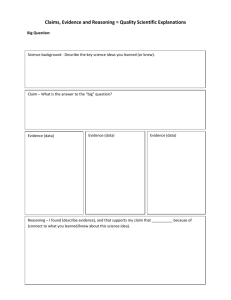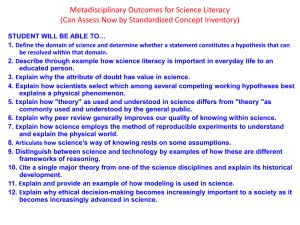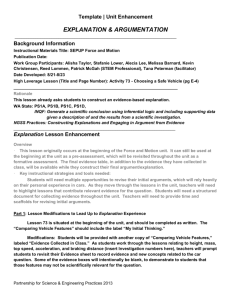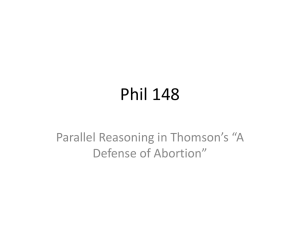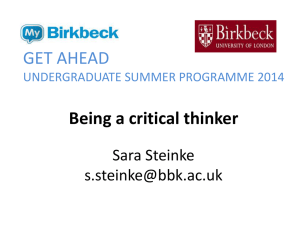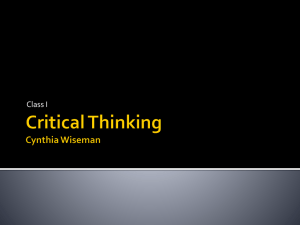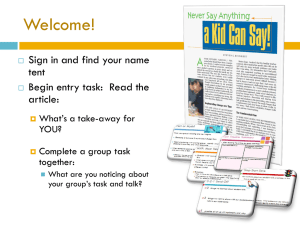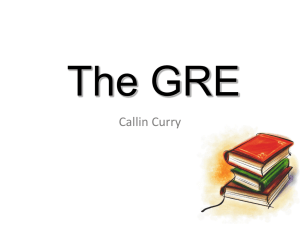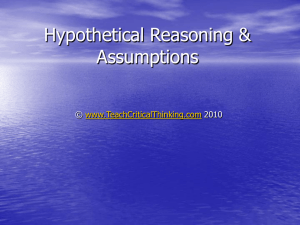Revised Powerpoint from Class #2 with definitions of claim
advertisement
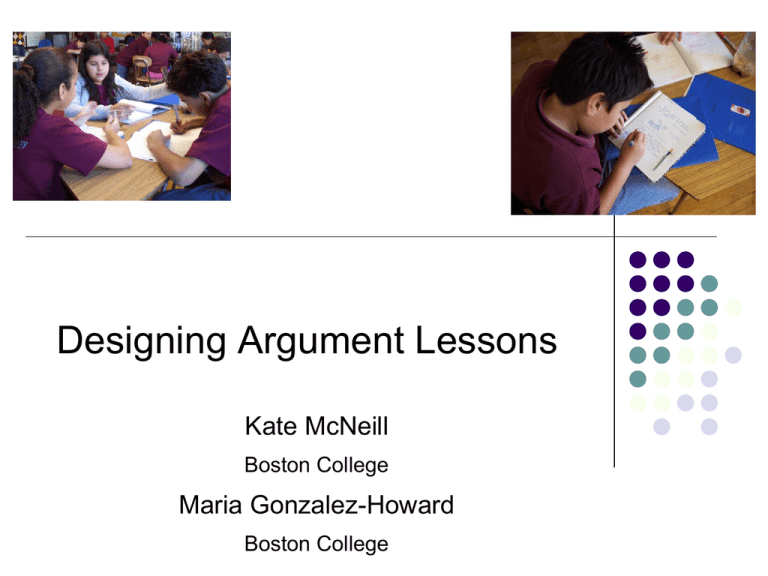
Designing Argument Lessons Kate McNeill Boston College Maria Gonzalez-Howard Boston College Overview of Class Date Nov. 27 2:30 – 3:45 Dec. 4 2:30 – 3:45 Dec. 6 (Thursday) 12:30 – 3:30 Dec. 11 2:30 – 3:45 Feb. 12 2:30 – 3:45 Topic Introduction to Argumentation Designing Argument Lessons Student conceptions Designing supports Classroom talk Assessments and rubrics Overview of Today Define Claim, Evidence and Reasoning Presentation on designing argument lessons Analyze CER questions – Characteristics of a “good” question Discuss Thursday (Class #3) How do we define claim, evidence and reasoning? With your colleagues: Develop definitions for claim, evidence and reasoning that would work across history and science. Consider any distinctions for the 3 components you would want to help students make between the disciplines. Use resources to develop definition Nussbaum article and McNeill & Krajcik chapters ELA common core Ideas from last class Definition of Claim A conclusion being drawn from the interpretation of facts Role of the claim: a statement around which the argument is organized A position that you take on an issue (such as in a debate) An answer to a question or a problem More “kid” friendly A statement that answers or draws a conclusion to a question (allows opinion and fact) A thesis statement A complete statement that answers the question and will be supported by data Definition of Evidence Supporting details Supporting data Independent vs. dependent evidence Comes from a source that’s not “you” Can be observed in the same way by anybody Constant observable feature Information that supports the claim Science: quantitative and qualitative data Social Studies: quantitative and qualitative data, primary source material, prior knowledge, experience Definition of Reasoning An explanation of how the evidence supports the claim It offers a way to interpret the evidence The relationship between the claim and the evidence Helps students with looking at descriptions (example: pharaoh) The reasoning also persuades the reader that the evidence supports the claim In science the reasoning is the scientific principle that explains the evidence This knowledge varies amongst the grade levels Allows students to demonstrate the inferential piece Show the “why” Designing Argument Lessons Step 1: Identify the question and data Step 2: Imagine the ideal student response Step 3: Create classroom supports Step 1: Identify Question and Data What question will you ask students? Criteria for a “good” question: Is the question clear in terms of what claim(s) a student should provide? Is there data the students could use as evidence? Is there reasoning students could use to explain why their evidence supports their claim? Step 1: Identify Question and Data What specific data will you either provide students or have students collect? Characteristics of data: Complexity and type of data Amount of data Step 2: Imagine the ideal student response Draft an “ideal” student response Does the claim align with the original question? Does there seem to be appropriate and sufficient evidence to use to support the claim? Does the question and context provide opportunities for students to include appropriate reasoning? How complex is the response? What type of additional support might students need? Step 3: Create classroom supports Visual representations Curricular scaffolds E.g. poster E.g. sentence starters, prompts, etc. Activity structures E.g. Specific ways to structure instruction such as time to work in pairs/groups before writing individually or engaging in a full class debate Designing Argument Lessons Step 1: Identify the question and data Step 2: Imagine the ideal student response Step 3: Create classroom supports Analyze CER Questions With a partner(s) analyze the four sample CER questions Rate each (poor, good, excellent) using the following three criteria: Is the question clear in terms of what claim(s) a student should provide? Is there data the students could use as evidence? Is there reasoning students could use to explain why their evidence supports their claim? Suggestions for revisions Include any suggestions for revision. Conclusion and Discussion Working on defining similarities and differences around claim, evidence and reasoning in history and science. Designing Argument Lessons Step 1: Identify the question and data Step 2: Imagine the ideal student response Step 3: Create classroom supports Next Time: History example, common student difficulties, creating classroom supports Thursday – Class 3. Dec. 6 Assignment #1 – Due Thursday, Dec. 6 Conduct a lesson (or assign homework) that includes argumentation. Collect 6 samples of student writing to share with your colleagues (2 stronger, 2 middle, 2 weaker). Write reflection about your lesson In class You will have work time with your colleague. Bring any resources you may want to use Contact Information http://argument-history-science.weebly.com Kate McNeill kmcneill@bc.edu Maria Gonzalez-Howard Maria.gonzalez.7@bc.edu
